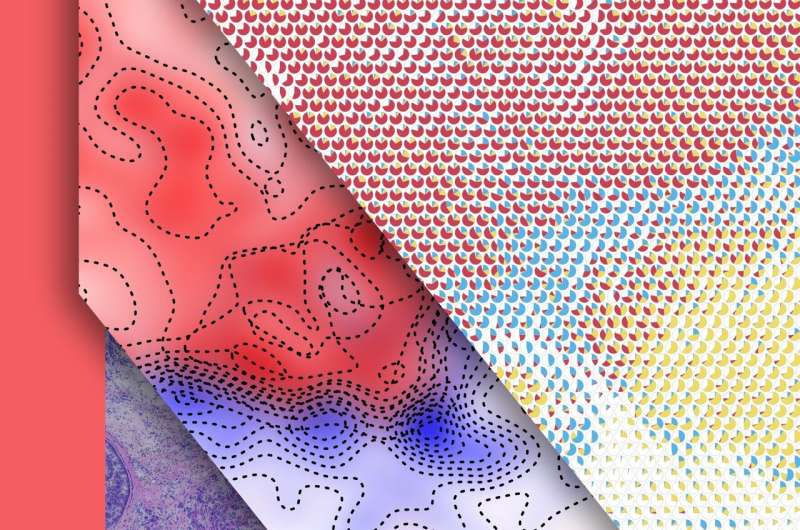This article has been reviewed according to Science X's editorial process and policies. Editors have highlighted the following attributes while ensuring the content's credibility:
fact-checked
peer-reviewed publication
trusted source
proofread
Novel AI method identifies locations, interactions among genes in and around tumors

SpaceMarkers, a new machine learning software developed by researchers at the Johns Hopkins Convergence Institute and the Johns Hopkins Kimmel Cancer Center, can identify molecular interactions among distinct types of cells in and around a tumor.
SpaceMarkers harnesses the information available through spatial transcriptomics—a cutting edge technology advancing the ability to measure gene expression in tissue samples based on their location in cells. Understanding the molecular profile of individual cells and the impact of intercellular interactions in the tumor microenvironment (cells in and around tumors) is crucial to distinguish the determinants of tumor progression.
The study introducing SpaceMarkers and its applications across diverse types of cancer was published as the cover article in the April 2023 issue of the journal Cell Systems.
Highly expressed genes are often observed in association with certain overabundant cell types, dominant biological processes or prominent interactions among cell types that are not commonly found in healthy tissue. Senior study author Elana Fertig, Ph.D., division director of oncology quantitative sciences and co-director of the Convergence Institute, explains that genes are expressed in cells for various reasons, and some of these genes can cause a high risk for cancer progression.
"SpaceMarkers can help cancer researchers identify if a gene is overexpressed because of cell-to-cell interactions," Fertig says. "It can also identify the specific cell-to-cell interactions associated with genes of interest. This new information can provide further avenues for researchers to understand the factors responsible for cancer or answer why some patients respond to certain treatments while others do not."
SpaceMarkers works by identifying regions of high activity from individual cell types seen in spatial transcriptomic data, explains lead study author Atul Deshpande, Ph.D., M.S., a postdoctoral researcher in the Fertig Lab at The Johns Hopkins University. Regions with high activity from two cell types are identified as the sites of cell-to-cell interaction. Then, the algorithm identifies molecular changes from the interaction of the two cell types.
The software has two modes of operation, Deshpande says. One is a simple, differential expression mode that identifies genes with significantly higher expression in the sites of cell-to-cell interaction, suggesting that this interaction causes genes to express at higher rates. However, the software does not take into consideration the spatial variations in the cell populations. The second (the residual mode) identifies genes with significantly higher expression after accounting for all cell populations identified in the spatial transcriptomic data.
Investigators tested SpaceMarkers using spatial transcriptomics data (measurements of gene expression in tissue samples based on their location in cells) from several clinical samples of pancreatic, breast and liver cancers. The software was validated by identifying genes known to affect interactions in tumor and immune cells.
"Many genes were consistent with our existing understanding of tumor-immune interactions in these types of cancer," Deshpande says. "We also found that SpaceMarkers, in its current form, is more suitable for analysis of solid tumors, such as those found in some breast and liver cancers."
The research paper was designed to explore SpaceMarkers' capability across various cancer types, and investigators will correlate identified genes with treatments and patient response in the next steps. Authors will optimize SpaceMarkers in future research to improve its performance on cancers, such as pancreatic cancer, that lack a distinct tumor mass or well-defined tumor boundaries.
The Convergence Institute team also wants to extend the application for analyzing data from developing higher-resolution spatial technologies, like multiplexed error-robust fluorescence in situ hybridization (MERFISH ) or Xenium.
More information: Atul Deshpande et al, Uncovering the spatial landscape of molecular interactions within the tumor microenvironment through latent spaces, Cell Systems (2023). DOI: 10.1016/j.cels.2023.03.004



















